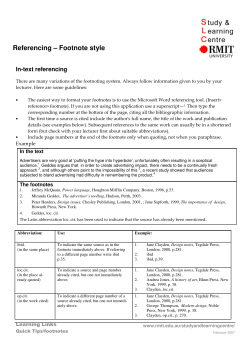
Mental Health Diversion Practices A Survey of the States AUGUST 2013
Mental Health Diversion Practices A Survey of the States AUGUST 2013 Data herein reflects best information as of September 20, 2013. For the most up-to-date data, please consult the online version of this report at tacreports.org/diversion-study 1 Mental Health Diversion Practices A Survey of the States Brian Stettin, Esq. Policy Director Treatment Advocacy Center Frederick J. Frese, Ph.D. Member of the Board of Directors, CIT International Member of the Board of Directors, Treatment Advocacy Center H. Richard Lamb, M.D. Emeritus Professor of Psychiatry and Behavioral Sciences Keck School of Medicine of the University of Southern California Member of the Board of Directors, Treatment Advocacy Center © 2013 by the Treatment Advocacy Center The Treatment Advocacy Center is a national nonprofit organization dedicated exclusively to eliminating barriers to the timely and effective treatment of severe mental illness. The organization promotes laws, policies and practices for the delivery of psychiatric care and supports the development of innovative treatments for and research into the causes of severe and persistent psychiatric illnesses, such as schizophrenia and bipolar disorder. 2 TACReports.org/diversion-study EXECUTIVE SUMMARY The criminalization of mental illness is nothing less than a national disgrace. A 2010 study by the Treatment Advocacy Center found that more than three times as many severely mentally ill persons in the U.S. are doing time in jails and prisons than receiving treatment in hospitals.i Other studies indicate a near-tripling over the last 30 years of the percentage of U.S. inmates who suffer from severe mental illness, to a current level of at least 16%.ii The primary mission of the Treatment Advocacy Center is to promote mental health laws and policies which, if fully implemented by state mental health systems, would minimize – if never fully eliminate – the tragedy of people with severe mental illness falling into the clutches of the criminal justice system. In this report, we look to how state criminal justice officials are responding to the colossal failure of their mental health counterparts to meet this challenge. For individual state reports, visit http://www.tacreports.org/diversion-study. TACReports.org/diversion-study 3 BACKGROUND Through the processes of “diversion,” law enforcement agencies seek to identify individuals whose criminal acts are clearly attributable to untreated mental illness and connect them to needed treatment rather than punishment – in other words, to divert them out of the world of criminal justice and into the mental health system that should have addressed their needs in the first place. There are practical limits to what can be accomplished though diversion. As much as we may feel sympathy for the person whose untreated mental illness results in a serious violent crime, it is usually not realistic to expect the criminal justice system to forgo prosecution in such cases. Prosecutors are constrained by the dual needs of delivering a sense of justice to victims and protecting the public from danger. Typically in these cases, the perpetrator’s only hope to avoid punishment is to prove himself “not guilty by reason of insanity” (NGRI) at trial – a notoriously high hurdle. But acts of serious violence are but a small fraction of the crimes committed under the sway of severe mental illness. Far more common are non-violent offenses such as drug crimes, property crimes and various misdemeanors including trespassing, public urination, public intoxication and aggressive panhandling. These are the cases crying out for a strategy of diversion. It stands to reason that where offenses are caused by lack of treatment, the antidote to re-offense is treatment, not incarceration. The added benefit is to relieve correctional facilities of some of their enormous burden to provide mental health care behind bars – a thankless task for which guards are illequipped and unfairly enlisted. Diversion is not itself a practice but an umbrella term encompassing a host of practices with a shared objective that includes parole and probation, which have long been used to prevent recidivism by linking mentally ill offenders to stipulated community-based treatment. In this report, we examine the prevalence of two specific diversionary tactics which have spread in recent decades: “Crisis Intervention Team” (CIT) policing and specialized mental health courts. Unlike the traditional vehicles of probation and parole, these newer techniques seek to pry people from the grip of criminal justice at an earlier point in the process – before resources and opportunities are squandered through pointless prosecution, conviction and incarceration. 4 TACReports.org/diversion-study MENTAL HEALTH COURTS The burgeoning “mental health court” movement is an offshoot of the larger trend towards specialized “problem-solving” courts. Where it is possible to identify cases on a criminal court docket in which the criminal behavior has resulted from specific underlying problems, problemsolving courts seek to work with the defendant to address the underlying problems in lieu of punishment. Other examples include drug courts, veterans’ courts and domestic violence courts.iii In a mental health court, the cases diverted are those where it appears the defendant would benefit more from community-based mental health treatment than incarceration. Violent offenses are almost always excluded from consideration. The transfer of a case from the ordinary docket requires the consent of the prosecuting authority. The social service agencies responsible for providing community-based treatment play a key role in screening and evaluating the needs of candidates. The presiding judges tend to have particular knowledge of mental illness and of the challenges defendants face in adhering to prescribed treatment. In the end, a treatment plan is presented and approved by the court, and the defendant agrees to comply with the plan in exchange for the suspension of the criminal charge. Follow-up court hearings to monitor the defendant’s progress are scheduled, and charges are ultimately dismissed if the defendant holds to his or her end of the treatment bargain and avoids reoffense.iv The mental health court model is conceptually similar to a civil law mechanism long championed by the Treatment Advocacy Center, known as “assisted outpatient treatment” (AOT).v As in AOT, mental health courts exert leverage over a mentally ill person to encourage compliance with prescribed treatment. The key difference is that the leverage here is the court’s power to order the person prosecuted and (if convicted) sentenced to jail, rather than the power to have the person hospitalized. Due to these similarities, some in the mental health system have made the mistake of believing that if they have a mental health court in their community, they have no need for AOT. This is a tragic and discriminatory miscalculation. As vital a role as mental health courts play for those who already face criminal prosecution, criminal conduct should never be a prerequisite for mentally ill individuals lacking insight to receive meaningful treatment. CRISIS INTERVENTION TEAM (CIT) POLICING The concept of Crisis Intervention Team (CIT) policing was pioneered by the Memphis police department in 1988. In essence, it entails a police department intensively training a cadre of officers on the nature of various forms of mental illness; the ways that these illnesses are likely to manifest in the community; the treatments known to relieve suffering and allow people with mental illness to function safely; the community-based resources available to connect people with these treatments; and proven techniques to communicate with and calm an agitated person in acute psychiatric crisis. Through this training and their own on-the-job experience, CIT police officers become mental health specialists. When an apparent mental health-related TACReports.org/diversion-study 5 incident arises in the community, the department’s CIT Unit is dispatched to the scene. Over time, CIT officers come to know many of the mentally ill community members they serve and develop bonds of trust.vi While a police department’s embrace of CIT serves a number of vital purposes – for example, having officers with knowledge of mental illness respond to sensitive incidents sharply reduces the risks of injury and deathvii – a primary goal is diversion. When a CIT officer makes an arrest for criminal behavior, he or she does not reflexively process the person for booking. Instead, the officer is trained to consider – and sufficiently network with providers to know -- whether treatment alternatives are available to ensure the safety of the person and the community. This may take the form of transferring the person to a hospital for evaluation of the need for inpatient care, referring the person to an appropriate community-based program or initiating a court proceeding for court-ordered outpatient treatment (AOT). If the person taken into custody is already known to the CIT unit, there may also be information available to the officer as to who is already responsible for his care, which helps facilitate a safe hand-off without need for booking. Research has established the effectiveness of CIT in reducing criminalization of mental illness. In 1995, Dr. H. Richard Lamb and colleagues examined how many of 101 consecutive referrals to the Los Angeles “SMART” unit (based on a model similar to CIT) resulted in jailing. Of the 101 referrals, they found 80 transported to a hospital setting, 69 of the 80 held for evaluation and only two jailed, i.e., a 2% booking rate. That compares to a 16% booking rate found in an earlier, comparable study of traditional policing in Chicago. viii A 2000 study of the pioneering CIT program in Memphis also found that targeted responses to mental health crises resulted in substantially fewer bookings.ix METHODS In this study, we sought to determine the prevalence of CIT and mental health courts within each state as a means of measuring each state’s dedication to diverting people with severe mental illness from the criminal justice system. To accomplish this, we relied on two online resources maintained by organizations that track the implementation of these practices. 6 The GAINS Center for Behavioral Health and Justice Transformation maintains a database of mental health courts operating in jurisdictions across the country. We supplemented this information with an online search for additional mental health courts in each state. The CIT Center at the University of Memphis School of Urban Affairs and Public Policy, Department of Criminology and Criminal Justice, maintains a website tracking the hundreds of law enforcement agencies nationwide known to have adopted the CIT model. TACReports.org/diversion-study Both websites are searchable by state. For each state, we compiled the list of known operating mental health courts and CIT programs. Using 2010 census data, we added together the total population of the jurisdictions served by the programs and – separately for mental health courts and CIT – divided those sums by the total population of the state. In other words, for each state, we calculated the percentage of the population residing in jurisdictions that use mental health courts and the percentage residing in jurisdictions with CIT programs. We refer to these in the chart below as the “percentages of population served” by each tactic within each state. LIMITATIONS There are several limitations to the significance of the data collected herein. First, it should be obvious that not all CIT programs nor all mental health courts are created equal. With CIT, effectiveness will vary greatly according to the quality of training that officers receive, the accessibility of local mental health resources, and the priority that a police department places upon the CIT unit’s mission. With mental health courts, success largely hinges on such variables as the court’s determination and power to hold patients and providers accountable, the thoroughness of defendant screening and treatment plan development and the availability of adequate community-based care. Much as we would have liked to, we lacked the means to measure the percentages of state populations with access to CIT units and mental health courts achieving high quality outcomes. Second, it was beyond our grasp to consider the size of each identified CIT unit and mental health court relative to the need within a jurisdiction. It is undoubtedly less than accurate in many cases to consider the population of a city “served” by CIT or a mental health court when in fact the programs are only able to meet a tiny fraction of the city’s demand. In effect, we have given each jurisdiction full credit for at least making an effort to address some of the local need. Third, we can offer no more here than a single shot at a moving target. CIT and mental health courts are both burgeoning trends on the criminal justice landscape. Inevitably, in the time between the compilation of this data and the reader’s consumption of this study, more programs will have been established, and the states where they have will have earned better grades. We nonetheless believe there is value in considering where things stand in mid-2013. TACReports.org/diversion-study 7 FINDINGS The following chart summarizes the findings of our examination of states’ criminal justice diversion efforts: 8 State Percentage of population served by a mental health court Percentage of population served by CIT Average Percentage Grade District of Columbia 100% 100% 100% A+ Utah 85% 97% 91% A+ Florida 67% 97% 82% A California 78% 79% 79% A Ohio 63% 88% 76% A Connecticut 100% 37% 69% B+ Illinois 78% 59% 69% B+ Idaho 76% 58% 67% B+ Nevada 88% 37% 63% B Washington 62% 63% 63% B Colorado 35% 86% 61% B Georgia 49% 70% 60% B Maine 34% 83% 59% B New Mexico 63% 50% 57% B North Carolina 24% 87% 56% B Arizona 21% 84% 53% B- Minnesota 31% 70% 51% B- Delaware 100% 0% 50% B- Oklahoma 59% 40% 50% B- Pennsylvania 60% 40% 50% B- Oregon 54% 38% 46% C+ Kentucky 28% 61% 45% C+ Missouri 51% 38% 45% C+ Alaska 44% 44% 44% C Hawaii 70% 12% 41% C Nebraska 42% 40% 41% C New York 75% 5% 40% C Virginia 6% 70% 38% C Texas 44% 27% 36% C Wisconsin 11% 60% 36% C Kansas 18% 49% 34% C- Tennessee 16% 51% 34% C- Indiana 25% 37% 31% C- Maryland 30% 31% 31% C- New Hampshire 40% 19% 30% C- North Dakota 22% 34% 28% D Michigan 48% 3% 26% D Wyoming 0% 52% 26% D Montana 17% 30% 24% D Louisiana 8% 38% 23% D TACReports.org/diversion-study New Jersey 7% 33% 20% D South Carolina 27% 10% 19% F Vermont 35% 1% 18% F Alabama 34% 0% 17% F South Dakota 0% 29% 15% F Iowa 8% 13% 11% F Massachusetts 13% 3% 8% F Mississippi 2% 13% 8% F Arkansas 10% 0% 5% F West Virginia 9% 0% 5% F Rhode Island 0% 0% 0% F Nat’l Average 48% 49% 49% C+ The outlying performance of the District of Columbia, while certainly commendable, merits qualification. Because the District is a single jurisdiction, the only possible result for each practice was zero (no program), or 100%. The comparison to multi-jurisdiction states here is misleading. Among the 50 states, only Utah, Florida, California and Ohio have very high prevalence rates for both of the measured diversion practices. Some other states have strikingly lopsided results: either laudable on mental health courts and paltry on CIT (New York, Delaware) or vice versa (Virginia, North Carolina). The results are alarmingly bottom-heavy. One-third of the states earn grades of D or F based on an averaging of the two penetration rates. Several at the very bottom have little or no adoption of either practice (Arkansas, West Virginia, Rhode Island). RECOMMENDATIONS For state criminal justice systems to improve their performance in the diversion of people with severe mental illness, most of the impetus will have to come from local law enforcement agencies to launch their own CIT units and mental health courts. Here are five strategies policymakers and others could implement to divert more people with severe mental illness out of state criminal justice systems. o State lawmakers: As needed, initiate and pass legislation to provide authorization for new specialized courts on a pilot or permanent basis. o State lawmakers: Incentivize and otherwise encourage local law enforcement to start diversion programs. For example, state governments could provide matching funds to underwrite the launch of local diversion efforts and/or provide technical assistance in accessing federal grant funds. TACReports.org/diversion-study 9 o Local jurisdictions: Seek federal grant funds to underwrite launch of mental health courts. The U.S. Department of Justice Bureau of Justice Assistance (BJA) administers a Mental Health Courts Program. As stated on the BJA’s website, “[t]his program funds projects that seek to mobilize communities to implement innovative, collaborative efforts that bring system-wide improvements to the way the needs of adult offenders with mental disabilities or illnesses are addressed.” Information on grants is available pm the Bureau of Justice Assistance website. o Law enforcement agencies: Contact the CIT Center at the University of Memphis at for practical information and tools for implementing CIT. o Members of the public, particularly those with a severely mentally ill loved one or friend: Though not a substitute for assisted outpatient treatment (AOT), mental health courts can be a valuable intervention tool once an individual has entered the criminal justice system. Mobilize and advocate for the creation of CIT units and mental health courts in your own communities. In some communities, NAMI affiliates have successfully encouraged or led CIT training efforts. Write, call and visit local elected officials to urge them to establish mental health courts. CONCLUSION Public officials have at their disposal an array of tools for reducing the criminalization of mental illness. These include restoring sufficient public psychiatric beds to meet the need for inpatient treatment, improving civil commitment laws and standards to increase treatment access before individuals with severe mental illness engage with law enforcement, making broader use of court-ordered outpatient treatment to support at-risk individuals with severe mental illness in the community and the two proven diversion strategies reported here: mental health courts and crisis intervention teams. Among the 50 states, only Utah, Florida, California and Ohio are reaching at least 60% of their populations with each of the measured diversion practices. Other states have strikingly lopsided results: both laudable on the use of mental health courts and paltry on using CIT (New York, Delaware) or vice versa (Virginia, North Carolina). What’s more, the overall results are alarmingly bottom-heavy. One-third of the states earn grades of D or F based on an average of the two prevalence rates. Several states at the very bottom have made little or no adoption of either practice (Arkansas, West Virginia, Rhode Island). Nationwide, mental health courts and CIT are each available to less than half our population. The national letter grade on diversion is a “C plus.” The national disgrace of criminalization will not end until we stop regarding this failure as acceptable and make universal use of the diversion tools known to keep individuals with severe mental illness out of jails and prisons. 10 TACReports.org/diversion-study REFERENCES i “More Mentally Il Persons Are in Jails and Prisons Than Hospital: A Survey of the States,” Treatment Advocacy Center 2010. ii Compare: L. A. Teplin (1990), “The prevalence of severe mental disorder among male urban jail detainees: comparison with epidemiologic catchment area program,” American Journal of Public Health; 80:663–669; H. J. Steadman, F. C. Osher, P. C. Robbins et al. (2009), “Prevalence of serious mental illness among jail inmates,“ Psychiatric Services;60:761–765. iii See “Problem-Solving Justice,” webpage hosted by Center for Court Innovation, accessed June 6, 2013. iv See “Improving Responses to People with Mental Illnesses: The Essential Elements of a Mental Health Court,” Council of State Governments Justice Center and the Criminal Justice/Mental Health Consensus Project 2008. v See “Assisted Outpatient Treatment,” webpage hosted by Treatment Advocacy Center, accessed June 6, 2013. vi See “CIT Overview,” webpage hosted by CIT International, accessed June 6, 2013. vii See “CIT Facts and Benefits,” webpage hosted by CIT International, accessed June 6, 2013. viii Lamb et al. (1995) “Outcome for psychiatric emergency patients seen by an outreach police-mental health team,” Psychiatric Services; 46(12):1267-71. ix Steadman et. al. (2000). “Comparing outcomes of major models of police responses to mental health emergencies,” Psychiatric Services; 51, 645-649 Treatment Advocacy Center TreatmentAdvocacyCenter.org Twitter: twitter.com/treatmentadvctr Facebook: facebook.com/TreatmentAdvocacyCtr TACReports.org/diversion-study 11
© Copyright 2025





















